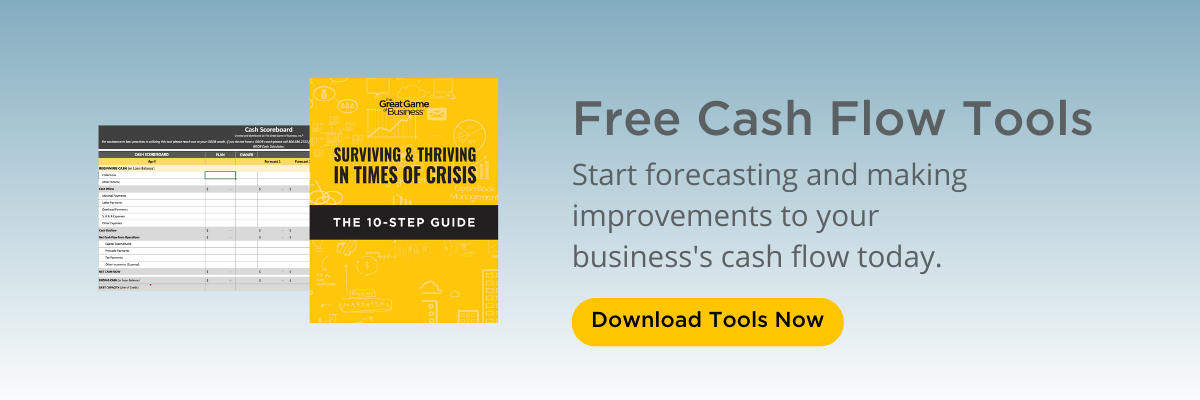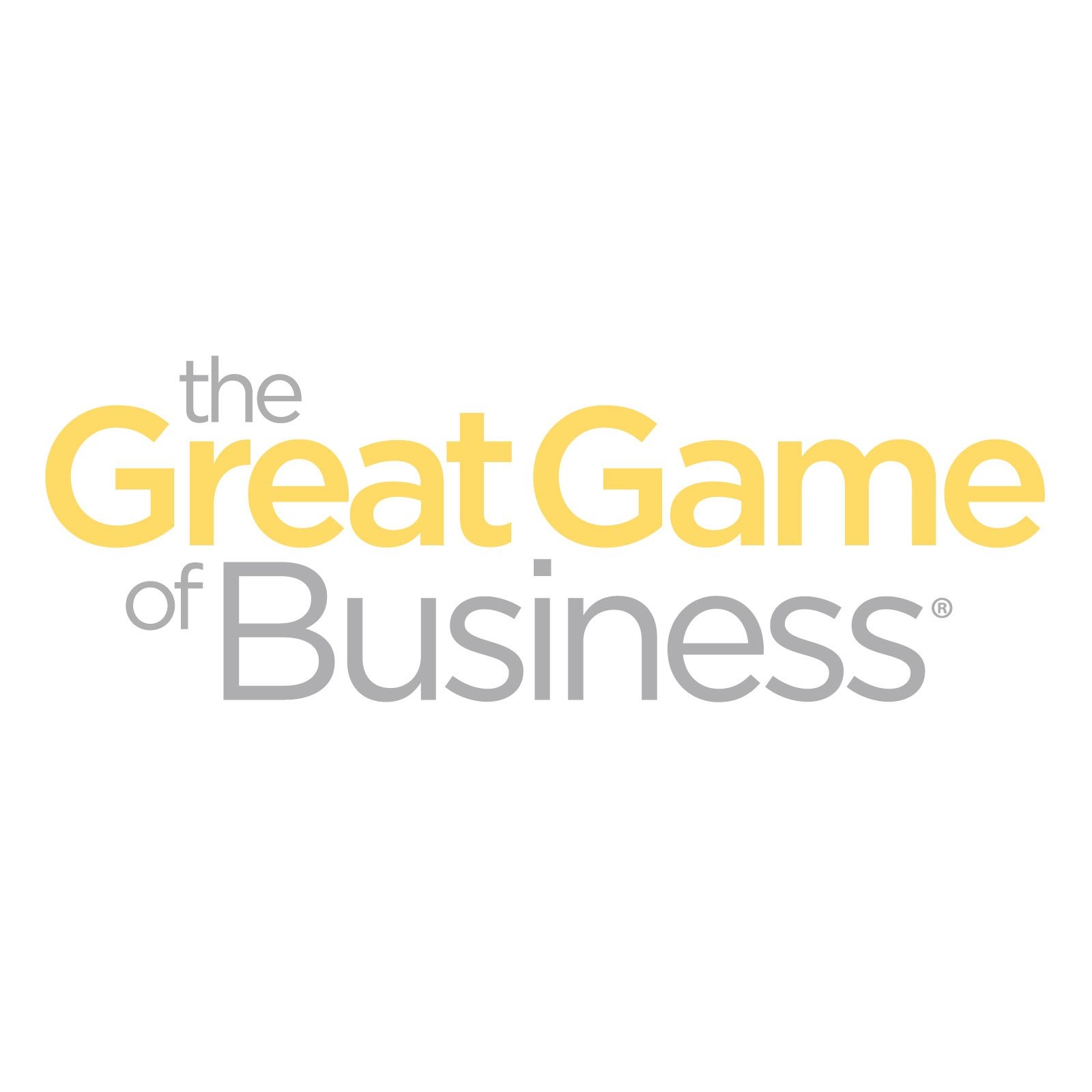.png?width=790&height=444&name=5%20Step%20Guide%20For%20Managing%20Cash%20Flow%20(1).png)
Cash is the lifeblood of any business. Without cash, an organization can't afford to keep its day-to-day operations running. Cash is important for two reasons; it offers flexibility to make investments for the future, and it offers security to be able to weather storms.
-1.png?width=65&height=65&name=Coachs%20Tip%20Chat%20Bubble%20(1)-1.png) Learn the different types of cash flow (all the sources and uses of cash in a business)
Learn the different types of cash flow (all the sources and uses of cash in a business)
So, how does a company calculate how much cash they have on hand, where its cash levels are headed, and how to positively influence cash? We've explained it all in the 5 steps below! Don't forget to download our cash flow tools and 90-day cash plan.
5 Steps To Create A Process For Managing Cash
1. Forecast – Start A Forecasting Process To Predict Cash Levels
Cash flow forecasting is the process of estimating the inflows and outflows of cash within an organization over a period of time. You'll want to start forecasting cash immediately – by forecasting cash, a company can avoid any unforeseen or urgent cash need surprises. To avoid these surprises, organizations should make forecasting cash flow a part of their monthly business cycle, regardless of their cash position.
Predicting cash from operations can be difficult if you don't have a systemic forecasting process in place (i.e., income statement) that is accurate and reliable. The Great Game of Business uses Huddles or company-wide staff meetings to take the mystery out of predicting future cash needs or cash generated by the operating part of the organization.
To do this, we assign lines on our income statement to employees. Doing so removes the responsibility of forecasting from one person and distributes it to the people who work most closely with that line. For example, the people working in sales would be responsible for reporting the dollar amount of cash generated from products or services that have been sold.
Our cash calculator tool DOES allow business owners to forecast cash on their own; however, it's best to develop a process where the responsibility is distributed to staff. This prevents forecasting from feeling like a chore and increases the likeliness of the organization continuing to do it. It also provides an opportunity for employees to develop a deep understanding of how various processes (i.e., A/P, A/R, operations, capital spending) affect cash. Forecast accuracy will also increase because the staff most familiar with that line item will be the ones to report it.
TIP: Forecasting cash does NOT need to be overly complicated. Your forecasts don't need to be exact, but you want to challenge yourself to be as accurate as possible. Use your gut when making these forecasts.-1.png?width=65&height=57&name=Chat%20Bubble%202%20(1)-1.png) Start forecasting your cash flow with our cash tools.
Start forecasting your cash flow with our cash tools.
2. Evaluate – Calculate Your Cash Flow And Consider Options To Improve Your Cash
Once you've started the forecasting process using our cash calculator, you'll want to take a moment to evaluate where you're at and identify the actions that would improve cash. The cash calculator will allow you to run those scenarios through the tool to see how each action would impact cash. While using the cash calculator, it's important to note that you will need to have access to your profit and loss statement and balance sheet.-1.png?width=65&height=65&name=Coachs%20Tip%20Chat%20Bubble%20(1)-1.png) Need help thinking of out-of-the-box ways to improve cash flow? Read this blog.
Need help thinking of out-of-the-box ways to improve cash flow? Read this blog.
A profit and loss statement (or income statement) is a financial report that states an organization's revenues and expenses. The profit and loss statement or P&L provides a summary of a company's profits/losses over a given period of time.
A balance sheet is a financial statement that provides a snapshot of what a company owns and owes, such as assets, liabilities, and shareholder equity.
You will need to input these items from your profit and loss statement or balance sheet to be able to calculate your cash flow:
Cost of Goods (COGS) - all of the costs directly related to the production of the company's products or services
Fixed Labor - total costs associated with employee pay and benefits that do not change over any given period of time
Variable Labor Percentage - total costs associated with employee pay and benefits that frequently change
Fixed Operating Expenses - total costs associated with operating a property that do not vary
Variable Operating Expenses - total costs associated with operating a property that varies over time
Tax Rate - the percentage at which a corporation is taxed
Cash Balance (Previous Month Ending) - the amount of money in an account or the amount of money available to a company
Accounts Receivable Balance (Previous Month Ending) - the total amount of money due to an organization for goods or services delivered or used but not yet paid for by customers
Accounts Payable Balance (Previous Month Ending) - amounts due to vendors or suppliers for goods or services received that have not yet been paid for
Inventory Balance (Previous Month Ending) - the amount of cash tied up in goods purchased for reselling
3. Plan – Create A Detailed Cash Plan
It's important to build a plan around your cash. Planning helps identify goals. Once cash goals have been identified, the company can determine what actions need to be taken to hit those goals. With our 90-day cash plan, you'll be able to set your new financial targets for the next 13 weeks and track your progress on each of those goals.
For example, a company may set a goal to collect enough cash to build a cash reserve. Cash reserves are a great way to ensure an organization can stand the test of time or endure a crisis. Setting a goal like this guarantees the company will have cash on hand when an emergency occurs.
4. Educate – Teach Your Employees The Importance of Cash And How They Make An Impact
Keep your team up to speed. Let them know the plan and how the company is performing compared to the plan.
You'll want to teach employees how they can impact cash. If everyone in the company understands the importance of cash and is mindful of the actions they can take to influence it, you'll see a greater impact on cash much quicker.
Click here to access a training handout that teaches employe-1.png?width=65&height=65&name=Coachs%20Tip%20Chat%20Bubble%20(1)-1.png) es about cash flow
es about cash flow
For example, a person who orders inventory in a company should understand the importance of maintaining appropriate inventory levels. Buying too much inventory can leave products on the shelf and tie up large amounts of cash. By avoiding ordering more products than the company needs, that person can help positively influence cash.-1.png?width=65&height=57&name=Chat%20Bubble%202%20(1)-1.png) For more ways to educate your employees, check out our online Community
For more ways to educate your employees, check out our online Community
5. Execute – Track Your Cash Progression On A Scoreboard
Put your plan into action with weekly forecasting, line-item ownership, and shared accountability. Create a Cash Flow “Scoreboard” that assigns the various sources and uses of cash to line owners (mentioned in step 1). You'll want to ensure the scoreboard easily reflects the company's cash flow goals and where the company stands compared to those goals. Review the scoreboard regularly and ask the team to continue to look for ways they can help to positively impact the company's cash position.
.png)








.png)




-5.png)

